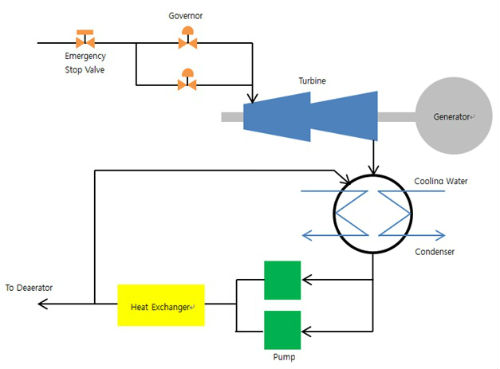Steam Turbine Generator
Summary
A steam turbine is device that extracts thermal energy from pressurized steam and uses it to do mechanical work on a rotating output shaft.
Because the turbine generates rotary motion, it is particularly suited to be used to drive electrical generator. The steam turbine is a form of heat engine that drives much of its improvement in thermodynamic efficiency from the use of multiple stages in the expansion of the steam, which results in a closer approach to the ideal reversible expansion process.
Steam turbines are made in a variety of sizes ranging from small < 0.75 kW units used as mechanical drives for pumps, compressors and other shaft driven equipment, to 1.5 GW turbines used to generate electricity. There are several classifications for model steam turbines.
Electrical power stations use large steam turbines driving electric generators to produce most of the world’s electricity. The advent of large steam turbines made central-station electricity generation part, since reciprocating steam engines of large rating became very bulk, and operated slow speed. Most central station are fossil fuel power plants and nuclear power plants; some installations use geothermal steam, or use concentrated solar power (CSP) to create the steam.
The turbines used for electric power generation are most often directly coupled to their generators.
As the generators must rotate at constant synchronous speeds according to the frequency of the electric power system, the most common speeds are 3,000 RPM for 50 Hz system and 3,600 RPM for 60 Hz System.
Typical Schematic

